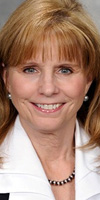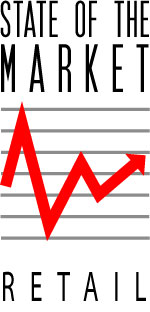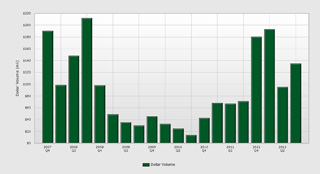|
Subscribe / Renew |
|
|
Contact Us |
|
| ► Subscribe to our Free Weekly Newsletter | |
| home | Welcome, sign in or click here to subscribe. | login |
Real Estate
| |
 |
December 13, 2012
It’s a great time to invest in local retail
CBRE Private Capital Group

Wilde
|

Tayet
|
Over the last five years, total employment in the Seattle area has declined at an average annual rate of 0.4 percent, while U.S. employment has declined at 0.6 percent.
In the last four quarters, Seattle’s employment has grown at an average annual rate of 2.5 percent. The CBRE Econometric Advisors forecast predicts growth of 1.6 percent in the Seattle area in the next five years. Seattle’s construction employment sector will post the best job performance over the next five years when compared to the other job sectors.
Employment’s impact
Although employment growth over the next five years will be modest, new retail supply will not keep up with demand. Job and population growth coupled with increases in per capita income are driving up demand for retail space.
Demand is predicted to outpace construction by almost double during the 2012-17 period. This is good news for landlords and investors alike as occupancy levels of existing retail space will rise and rents will follow.

Total employment in the Seattle metro area grew by 23,700 jobs during the 2006-11 period. Total employment in the Seattle metro area is projected to grow by 174,100 jobs during the 2012-17 period. During the same time period, new supply of retail space is expected to average 381,300 square feet, while net absorption is expected to average 713,300 square feet, outpacing new supply.
U.S. retail sales
As reported by CBRE Econometric Advisors, U.S. September retail sales growth was positive, even accounting for a jump in auto and gasoline sales; on a month-to-month basis, growth in core retail sales was close to 1 percent. Consumers no doubt remain circumspect about the economy, but heading into the holiday shopping season we are seeing positive signs that consumers are still willing to shop.
As we finish out 2012, year-over-year growth in core retail sales is expected to stay in the 3.5 percent to 4.5 percent range, and possibly exceed that during the holiday shopping season. Core sales are still growing, which means that retailers will continue to demand more space (though it will be muted compared to previous recoveries), helping to stabilize availability rates for the rest of the year.
Seattle retail sales
Total retail sales for Seattle are estimated at $40.30 billion — accounting for 2.43 percent of the nation’s total retail sales. Over the last five years, retail sales in Seattle have grown at an annual rate of 2.7 percent. Our forecasts show retail sales for Seattle growing to an annual rate of 4.3 percent over the next five years.
Retailer activity
The last few years have been “blue light special” times for value and discount retailers. Bold, well capitalized national and regional retailers took advantage of anchor retail spaces that had been vacated by the closing of several other retailers not able to weather the storm of the Great Recession.
In the Puget Sound region, retailers that added multiple store locations were Ross, Marshall’s/TJ Maxx, Dick’s Sporting Goods, Hobby Lobby, Total Wine, BevMo, Grocery Outlet, 7-Eleven and Big Lots, to name a few.
Has anyone noticed that we have a few more banks in the region? How about espresso stands? Other categories that have continued to expand despite the economy are quick-service restaurants, personal services, restaurants with liquor, and pawn shops that have embraced consumers’ demand to spend money on something, anything, to make them feel better.
Absorption, rent rates
To analyze the retail market of the future, we divided the data for vacancy and rental rates into two categories. The results show that spaces less than 10,000 square feet are following the expected trend of rising rents as vacancy levels drop. Other trends are demand for smaller space is higher than that for larger space; and retailers are shrinking their leasable area whenever possible to cut down on overhead. Convenience retailers often fit into this smaller size category by the very nature of their business.
Convenience and urban retail is in strong demand, followed closely by grocery-anchored shopping centers.
Retail spaces of more than 10,000 square feet were the hardest hit during the economic downturn. Typically these spaces are occupied by destination types of retailers. As we all know, the “category killers” of the past couple of decades have managed to kill off the weakest competitors in all categories except office supplies and hobbies.
Data shows rental rates going down for the larger spaces because of soft demand. Many of the vacant retail boxes of more than 10,000 square feet have been backfilled by non-traditional retailers. Some of the uses we have seen for these spaces are back office/call centers, schools, medical offices, churches and auto-related services.
Retail investments
The number of retail sale transactions in the Puget Sound region (King, Pierce and Snohomish counties) more than doubled in the second quarter of 2012 when compared to the same period in 2011.
What changed? Small transaction velocity.
Smaller transactions helped bolster sales volumes to more than $63 million for the quarter. In fact, there were only four transactions more than $4 million.
Also noteworthy is the continued compression in average cap rates to 7.21 percent, down from 7.61 percent in the second quarter of 2011. The average cap rate for 2012 has been significantly impacted by a few key sales of grocery-anchored centers: Whole Foods in Lynnwood traded at a 5.75 percent cap rate and the Maple Valley Safeway-anchored center at a 5.55 percent cap rate.
Retail assets were very popular in the third quarter of this year as well, where total sales volume was up 27.9 percent over the second quarter of this year. Comparing third quarters of 2012 and 2011, the increase in volume was 14.3 percent. Two sales in this quarter comprised the majority of the increased volume: the sale by Safeway of the project it anchored and developed in West Seattle for $30.7 million and the $18.7 million Merlone Geier acquisition of the Sherwood Shopping Center in Bellevue.
Cap rate trends
The difference in the cap rates from third quarter 2011 to third quarter 2012 is a compression of 26 basis points. However, comparing the 2011 second quarter cap rate average of 7.29 percent to the second quarter 2012 average of 7.41 percent belies the trend.
What happened? In the third quarter there were the two large sales we mentioned above, neither of those reported cap rates. Also in this quarter, there were three REO dispositions and a couple of distressed sales that brought the cap rate averages up.
With the increased availability of financing and interest rates for quality retail assets hovering in the range of 4—5 percent, retail investments offering 5—8.5 percent cap rates present great positive leverage for investors in this asset category. The positive leverage alone exceeds what investors can achieve on treasuries and other substitute investments, so why wouldn’t this be a great time to invest in retail assets?
Constance Wilde is vice president of CBRE Private Capital Group, Washington Retail. Brent Tayet is a senior associate of the group.
Other Stories:
- New economy demands new fundamentals, vision
- Look beyond the words of restrictive covenants
- Bellingham embarking on waterfront redevelopment
- Real Estate Surveys: Capitol Hill Housing
- Real Estate Surveys: Real Estate Investment Services
- Real Estate Surveys: Spectrum Development Solutions
- Real Estate Surveys: Kinzer Real Estate Services
- Real Estate Surveys: Clise Properties
- Real Estate Surveys: Talon Private Capital
- Businesses rethink data storage on ‘the cloud’
- Tacoma lays down a new path for growth
- CBA Insights speakers profile: Lisa Picard
- CBA Insights speakers profile: Caroline King
- Tech companies boost local office market
- Multifamily: A buyer’s or seller’s market?
- Cautious optimism for industrial market
- Are you maximizing your real estate tax benefits?
- South Lake Union office is a smart growth model
- Real Estate Surveys: O&S Partners
- Real Estate Surveys: Trammell Crow Co.
- CBA Insights speakers profile: Matt Hooper



